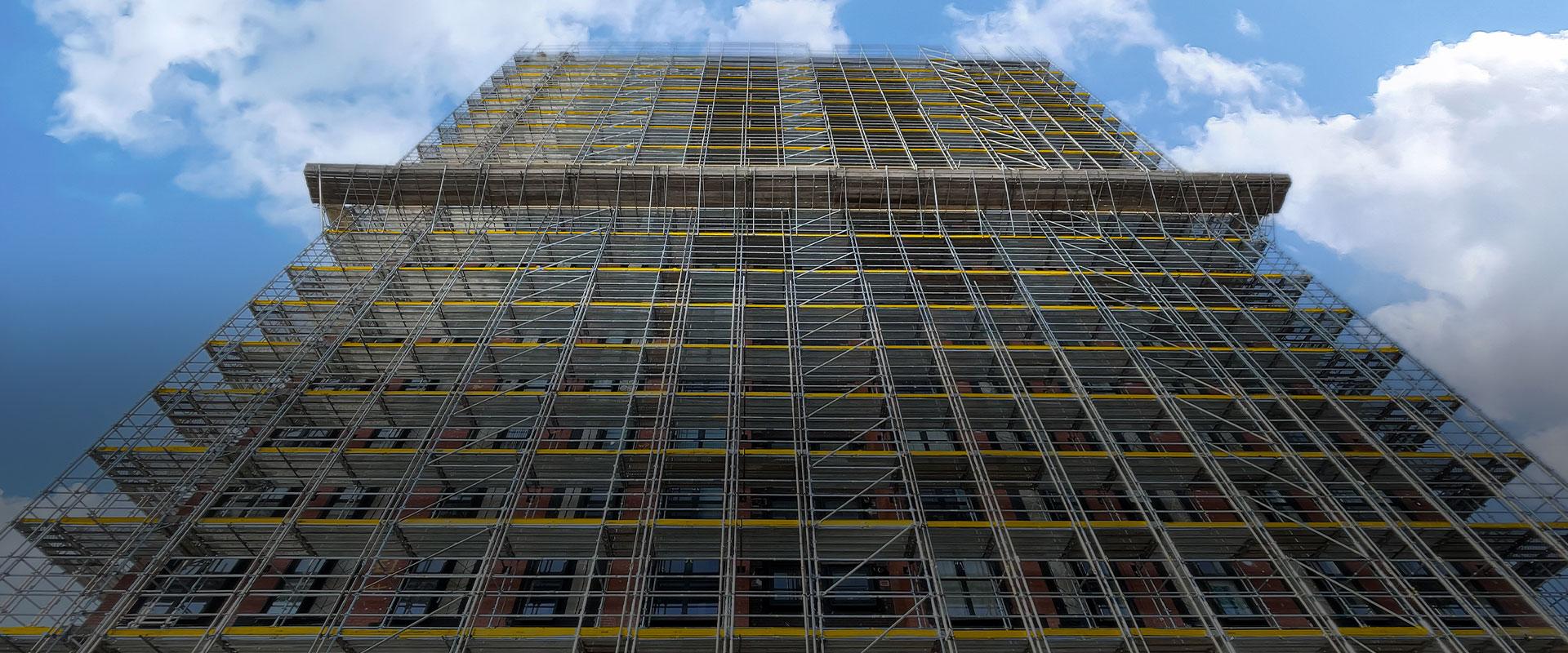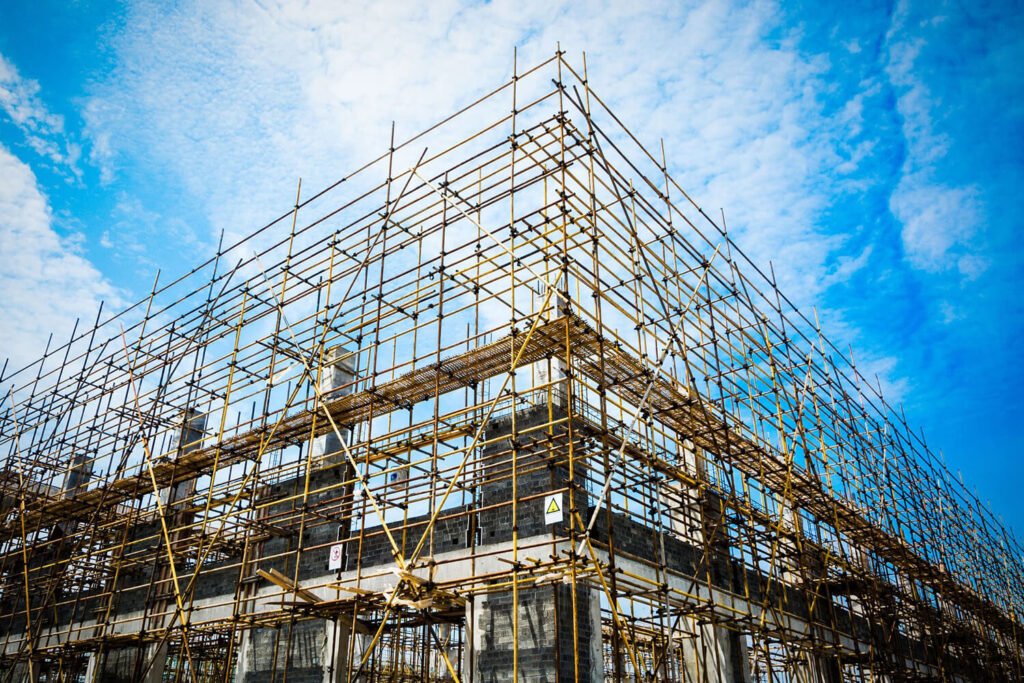Scaffolding Guildford: The Best Option for Your Building and Renovation Projects
Scaffolding Guildford: The Best Option for Your Building and Renovation Projects
Blog Article
Checking Out the Different Types of Scaffolding Made Use Of in Building Projects
The building and construction market relies heavily on different kinds of scaffolding to fulfill specific project needs, each offering distinctive benefits and applications. Traditional frame scaffolding provides a durable foundation for basic tasks, while suspended scaffolding is essential for work on skyscraper frameworks.

Traditional Frame Scaffolding
Standard structure scaffolding is among the most widely made use of methods in the construction industry as a result of its robustness and flexibility. This system contains upright and straight structures that are set up to develop a steady platform for products and employees. The main components include vertical messages, straight journals, and angled braces, which with each other supply a solid framework that can support considerable tons.
Among the vital benefits of standard structure scaffolding is its adaptability to different construction tasks, varying from domestic structures to large commercial structures. The modular layout permits very easy assembly and disassembly, making it reliable for both long-lasting and temporary tasks. Additionally, the system can be customized in elevation and width, accommodating different structure layouts and website conditions.
Security is extremely important in scaffolding applications, and standard framework systems are equipped with guardrails and toe boards to avoid drops and ensure worker protection. Routine inspections and adherence to safety laws are essential in maintaining the stability of the scaffold (Scaffolding). On the whole, conventional frame scaffolding continues to be an essential choice in the construction industry, providing a reputable platform for labor and boosting general project performance

Suspended Scaffolding
Suspended scaffolding uses an unique service for construction tasks that need accessibility to elevated surfaces, specifically in scenarios where traditional framework scaffolding might be not practical. This type of scaffolding is commonly put on hold from the roofing system or upper levels of a framework, making use of a system of pulley-blocks, platforms, and ropes to create a working space that can be adapted to numerous heights.
Among the key benefits of suspended scaffolding is its versatility. It can be easily repositioned or lowered to fit adjustments in building and construction demands, making it optimal for tasks such as window installation, frontage job, and maintenance on skyscrapers. Additionally, the minimal impact of suspended scaffolding permits for much better usage of ground area in city atmospheres, where room is usually minimal.
Safety is an essential factor to consider in the use of suspended scaffolding. Generally, suspended scaffolding supplies a effective and reliable solution for accessing hard-to-reach locations in different construction circumstances, enhancing both performance and safety on website.
System Scaffolding
System scaffolding, typically considered as a contemporary service in the scaffolding sector, consists of pre-engineered elements that can be swiftly constructed and adapted for different building tasks. Scaffolding. This kind of scaffolding is identified by its modular design, which allows for adaptability and efficiency find more on task sites, suiting architectural requirements and various elevations
Commonly made from high-strength steel or aluminum, system scaffolding offers boosted longevity and security. The components include vertical messages, horizontal journals, and diagonal braces, which interconnect securely, ensuring a robust framework. The style frequently includes standardized fittings, streamlining assembly and disassembly procedures, consequently decreasing Homepage labor time and prices.

Rolling Scaffolding
Moving scaffolding is a versatile option to conventional fixed scaffolding, developed for wheelchair and convenience of usage on building and construction sites. This type of scaffolding is composed of a platform supported by frameworks with wheels, enabling workers to easily relocate it as needed. The movement attribute considerably improves performance, as it decreases downtime connected with taking apart and putting together dealt with scaffolding.
Typically built from light-weight products such as aluminum or steel, rolling scaffolding provides a durable yet mobile solution for jobs needing frequent repositioning - Scaffolding. It is specifically advantageous in tasks such as paint, drywall installment, and electric work, where access to numerous heights and places is essential
Security is critical in rolling scaffolding style, with attributes such as locking wheels to avoid unplanned motion when in use, and guardrails to protect workers from falls. Furthermore, many versions are adjustable in elevation, accommodating numerous project requirements.
Cantilever Scaffolding

The style of cantilever scaffolding usually entails making use of braces or arms secured go to a building or structure, allowing the system to extend exterior securely. Safety is critical; thus, these scaffolds have to be engineered to stand up to environmental problems and numerous lots. Normal inspection and maintenance are important to guarantee structural stability and worker security.
Cantilever scaffolding is favored for its flexibility and efficient use of space, making it a popular choice in city atmospheres where room restrictions are typical. It helps with much easier accessibility to high altitudes, inevitably contributing to the total efficiency of building projects. Similar to all scaffolding types, appropriate training and adherence to security requirements are important for workers utilizing cantilever scaffolding.
Conclusion
Standard frame scaffolding supplies stability, while put on hold scaffolding offers flexibility for elevated tasks. System scaffolding promotes quick assembly, and rolling scaffolding enhances mobility for differing work environments.
Conventional frame scaffolding gives a durable foundation for general jobs, while suspended scaffolding is necessary for work on high-rise structures.Rolling scaffolding is a versatile choice to conventional fixed scaffolding, made for movement and ease of use on construction websites. As with all scaffolding types, appropriate training and adherence to safety requirements are important for employees using cantilever scaffolding.
Conventional frame scaffolding offers stability, while put on hold scaffolding supplies convenience for raised jobs. System scaffolding assists in quick assembly, and rolling scaffolding enhances movement for varying job settings.
Report this page